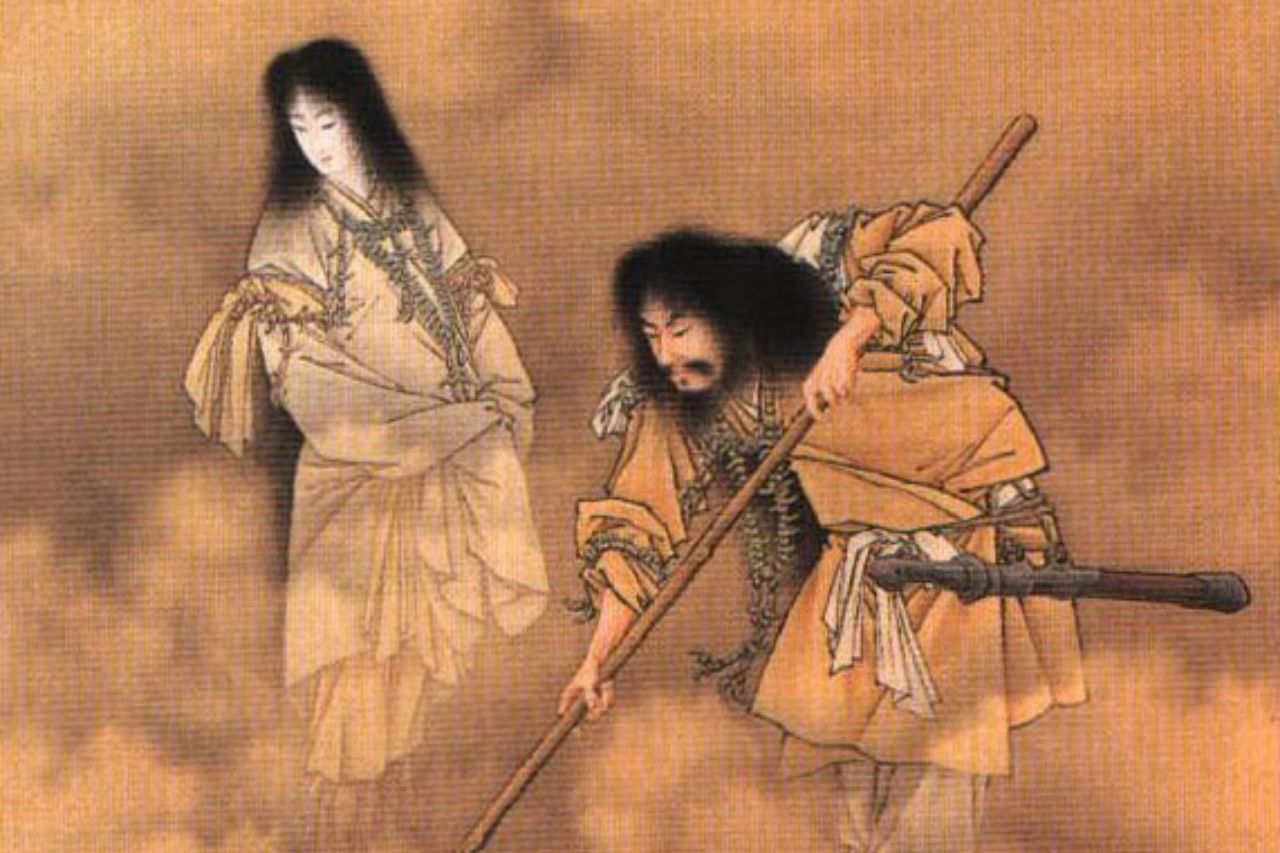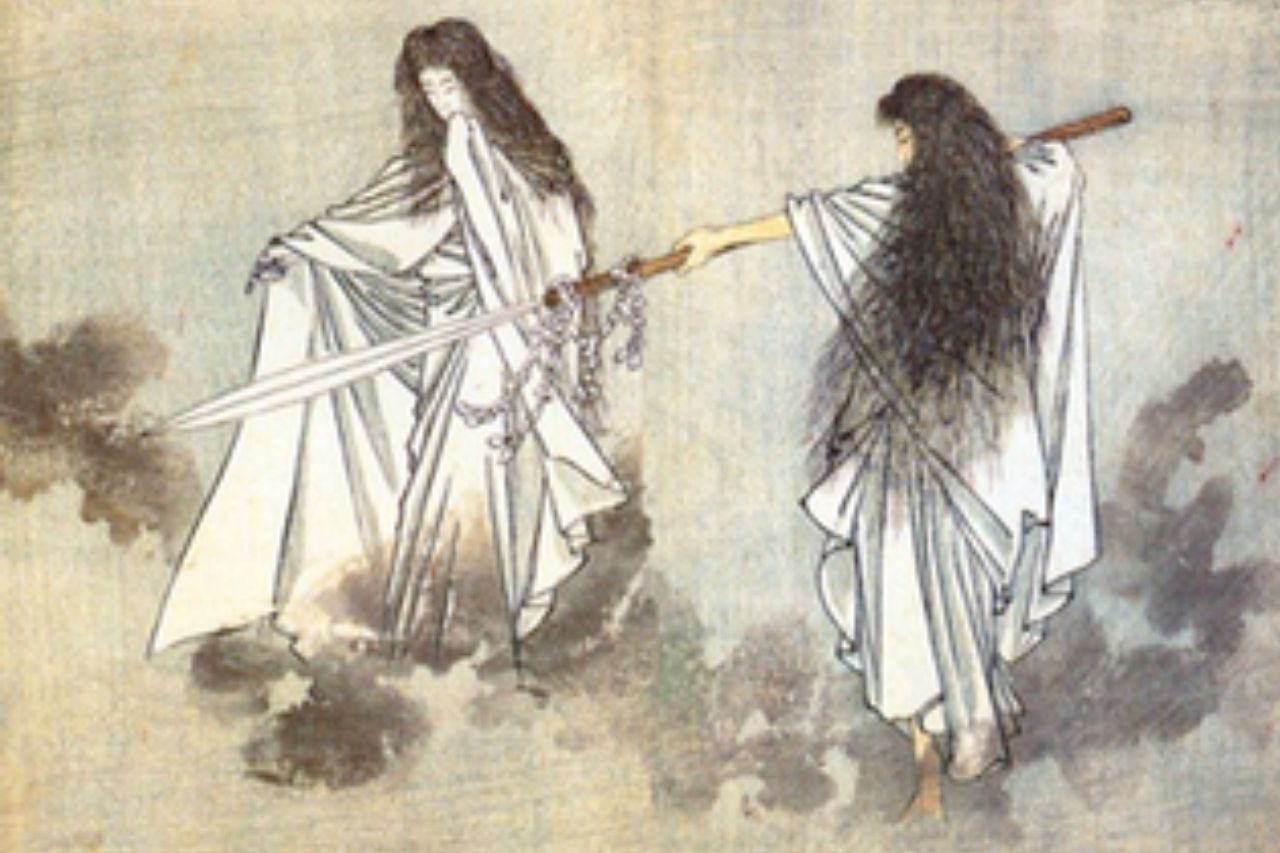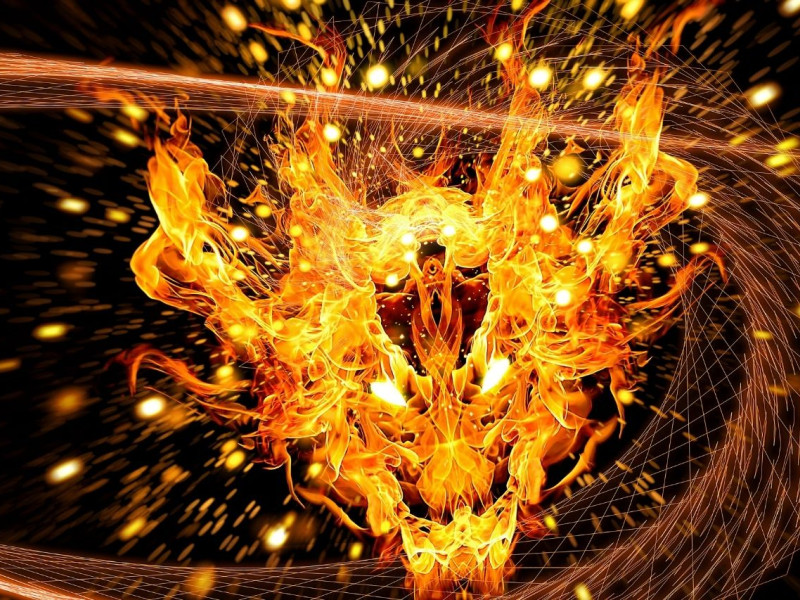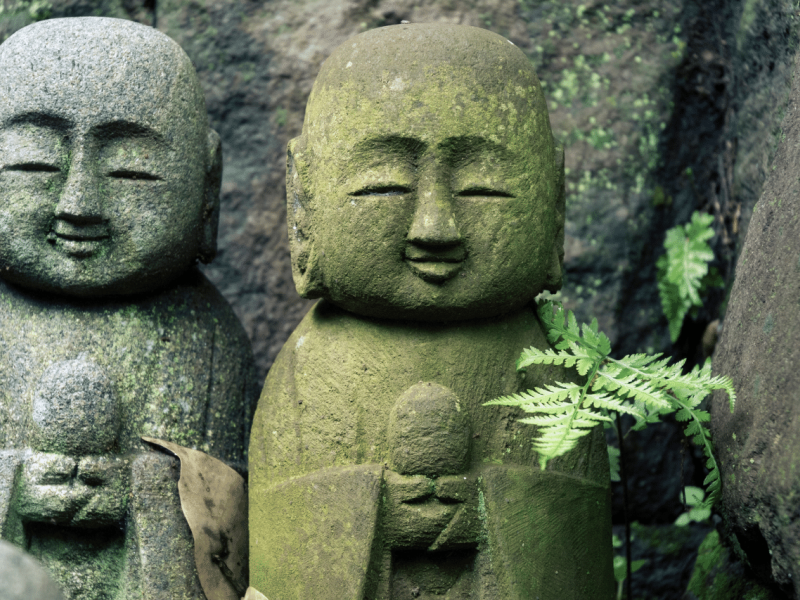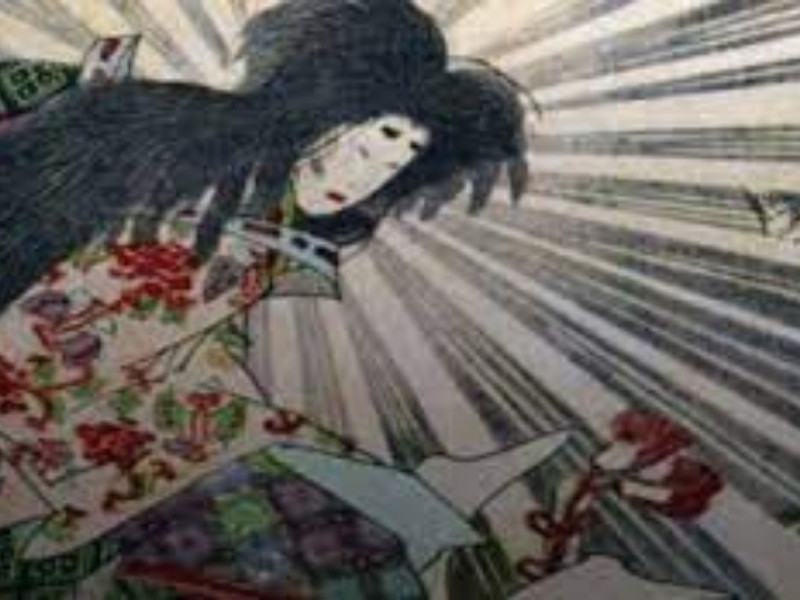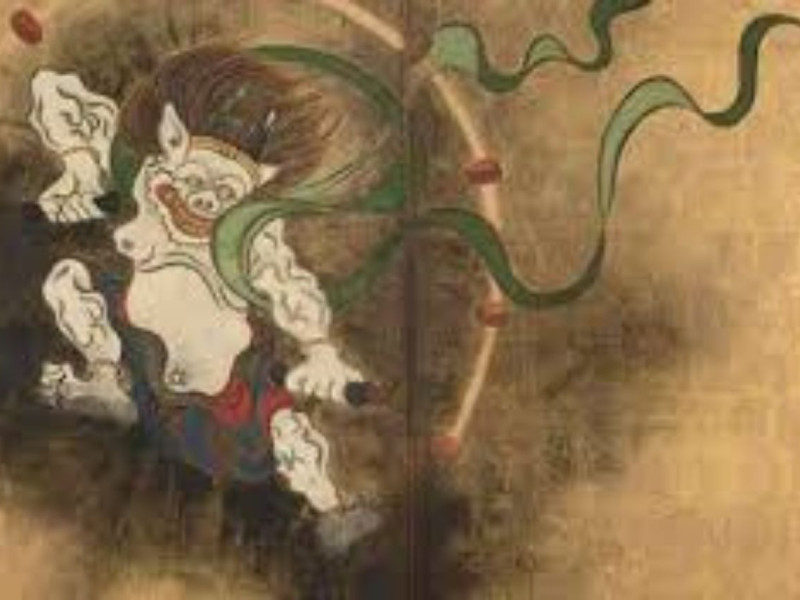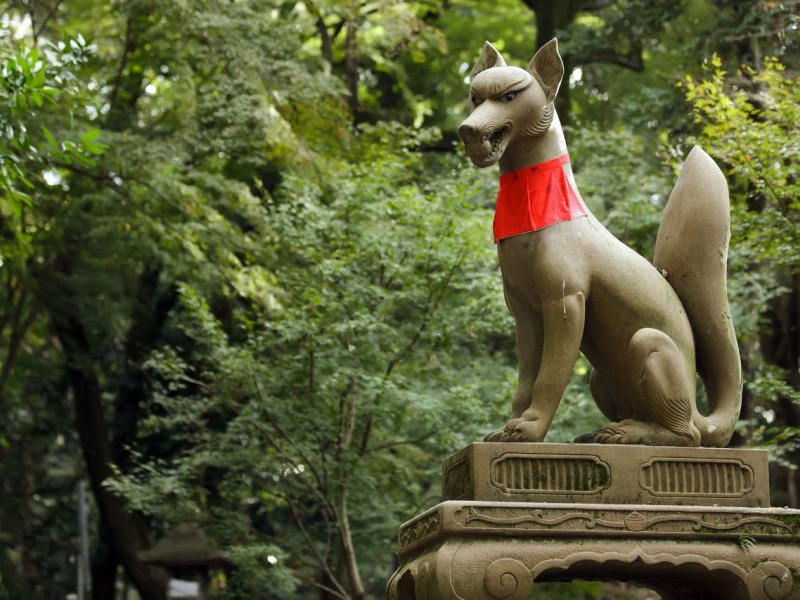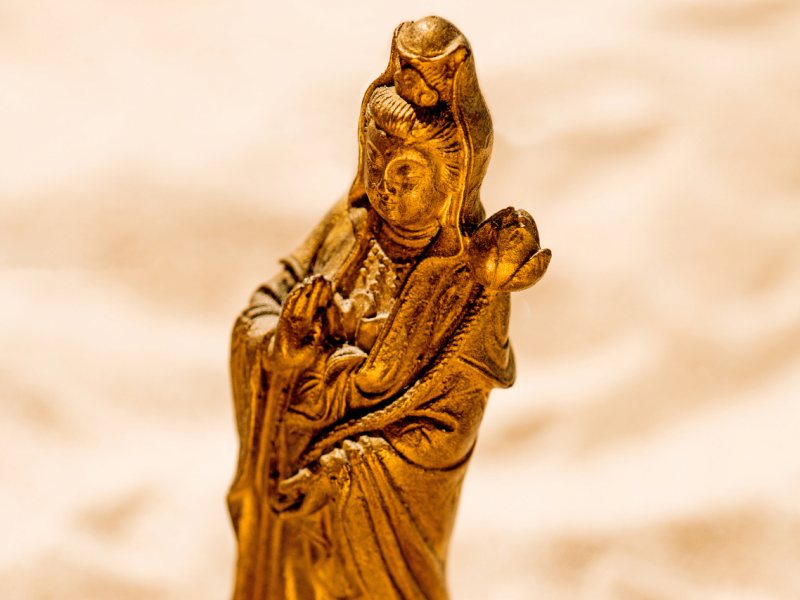Izanagi
Izanagi: Meet the Creator God in Japanese Mythology
Izanagi or Izanagi-no-Mikoto is the creator god of the Japanese kami, or gods, in Japanese mythology. He and his wife, Izanami, created the Japanese islands. He is also in charge of Yomi, the Land of the Dead. Read on to find out how he went to save his wife but ended up running away.
Who Is Izanagi in Japanese Mythology?
Izanagi is a creator deity in Japanese mythology, and his name means “He who invites.” He is thought of as the father of the Japanese pantheon. While he didn’t create all of the kami or spirits/gods, he is responsible for creating many of them. He is also responsible for creating certain Japanese rituals such as marriage and misogi, a cleansing ritual.
He also had other powers, and he carried around a spear called Ame-no-nuboko, which he would use to mix the seas. His other job is to protect the world from having more deaths than births. He keeps things balanced, and he keeps the powers of Yomi, the Land of the Dead, from getting too out of control. He was in charge of the Heavens himself, but after he birthed three powerful gods, he made them the leaders.
In Shinto Izanagi is an important part of the tradition, as his origin story comes from Shinto belief. He and his wife were the ones who helped to cause the creation of Japan. However, things went south after Izanami died. And perhaps, that’s where Izanagi’s story truly began.
Origin and Family of Izanagi
Even though he was a creator deity, he did have parents, and he and Izanami were not the first gods present in the heavens. They were seventh-generation children of earlier deities. They were actually brother and sister.
Izanagi and Izanami created the Japanese islands by dipping a spear into the sea. They churned it around, and it created the islands. These islands became something like their children, and their names were:
Kyushu
Honshu
Shikoku
But after Izanami died and Izanagi went through a specific cleaning ritual, he birthed three more kami:
Amaterasu, the sun goddess
Tsukuyomi, the moon god
Susanoo, the god of sea and storms
He was later considered the father of the Japanese Imperial Family.
The Mythology of Izanagi, Father of the Pantheon
Izanagi took part in many myths, and they were all full of excitement and strange occurrences. Not only that, but he was destined for sorrow in more ways than one. But the main Izanagi myth has to do with the tragic death of his wife.
Izanagi Creation Myth
At the beginning of time, only Heaven was filled, and the earth was empty. The older deities gave Izanagi and Izanami permission to fill the earth below. Their first order of business was to use the spear to create the islands. After Izanagi and Izanami formed the islands of Japan, they stood back and took notice of their bodies and how they would fit each other.
In a collection of Japanese myths, Izanagi and Izanami discussed how their bodies could come together to procreate. Izanami said that she had a part of her body that hadn’t yet fully formed, and Izanagi said he had a part that had grown too much. They realized that if they put these parts together, they could bear children. After that, they performed a marriage that included walking around heaven’s pillars and meeting together in the middle.
But in the first ceremony, Izanami spoke first, which wasn’t allowed. As a result, the children they had were deformed, and they had to do the ceremony again. The second time, Izanagi spoke first, and the marriage was saved. Then, they were able to have/create the rest of the Japanese islands as well as a group of other gods and spirits.
Izanami’s Death and Izanagi’s Sorrow
One of their children was the fire god named Kagutsuchi, sometimes thought of like a dragon. However, this fire god burned his mother to death in his flames. Because he was so sad, Izanagi killed their child. He began to mourn for his wife, who had already traveled to Yomi, the Land of the Dead.
Izanagi’s Journey to the Underworld
Since he knew that’s where his wife was, Izanagi decided to head down to Yomi, which was also called Yomi-no-Kuni. It was a dark and dangerous land, full of demons or trolls called oni as well as full of impurities. Izanagi was taking a great risk by going there, and once he was there, he was happy. He saw that Izanami looked just the same, but then he shone a light on her.
He saw the truth, and instead of looking whole and healthy, she was rotting away full of maggots and demons. Because she had eaten some of the food which was there in Yomi, she was cursed to remain there, and he could no longer save her. He had to run away, but Izanami was furious, and she chased him for a little. He was able to escape, but he put a boulder at the entrance to keep her from escaping.
Now that she was part of Yomi, she would only bring destruction and death if she escaped into the world. She swore to make 1000 people die each day, and Izanagi told her that he would make 1500 people be born each day to create a balance of life more than death. But she sent demons she bore while still a rotting corpse out into the world.
Izanagi and the Birth of New Gods
After he ran away from Yomi, he had to clean himself because of all the impurities. So he jumped into a hot spring and began to wash himself off. This act was the inspiration for the cleansing ritual misogi, which became a ritual important to tradition and belief in Shinto. Izanagi cleaned his left eye, then his right eye, and then his nose, and something miraculous happened.
Out of his left eye came Amaterasu, the sun goddess, and out of his right came Tsukuyomi, the moon god. Out of his nose came Susanoo, and he declared that all three of these should be the rulers of heaven under him. Unfortunately, his two sons Tsukuyomi and Susanoo, had to be banished for bad behavior, and Amaterasu became the head of the heavens. Izanagi became the father of the Japanese Imperial Family through her line.
But he did appoint Susanoo to guard Yomi in his stead, and Susanoo is still in that position. Amaterasu is still in her position as well as head of the heavens, and her father became her advisor.
Izanagi and Other Gods
Izanagi’s stories and his position are similar to other gods and goddesses from other cultures. These included:
Greek mythology’s Orpheus and Eurydice: Orpheus had the same experience where his wife died, and he went to visit her in the underworld. However, because he didn’t follow the rules given to him about taking his wife out, he lost her
Greek mythology’s Hades and Persephone: This pairing is like Izanagi and Izanami because Persephone also couldn’t return to the land of the living because she had eaten some of the food of the underworld
Izanagi in Pop Culture
Izanagi’s name appears a few times in pop media:
Izanagi is the name of a tectonic plate from ancient times which was replaced in the Pacific 60 million years in the past
He also appears as himself in Marvel Comics
He is also in the Megami Tensei video games playing a demon
Conclusion
Take a look at the main points covered in the article above about the god Izanagi.
Izanagi is a creator deity and considered the father of the Japanese pantheon
It is not entirely accurate, as he wasn’t the father of all the Japanese kami or gods, but he was the father of many
His name means “he who invites,” and he was a very important Shinto deity
Izanagi had many powers, including the birthing of gods, and he used a spear to create the Japanese islands along with his sister and wife. This spear was called Ame-no-nuboko
He also was in charge of keeping the world in balance from the powers of Yomi, the Land of the Dead. But that was because of a later story involving the death of his wife
He was a creator deity, but he wasn’t the first god in the universe. There were others before him. He was seventh-generation born along with his sister and future wife, Izanami
Izanagi dipped his spear into the sea, and mixing the waters together, along with Izanami, he was able to create some of the Japanese islands
Then he realized that he and his sister had parts of their bodies that could fit together. They discussed how she had a part that wasn’t fully grown, and he had a part that had grown too much
They decided they could put their bodies together to create future generations of gods, and they went to get married. The marriage ritual included walking around the pillars of heaven and then returning to meet each other in the middle
But the rule was that the man must speak first, and Izanami spoke first, ruining the ceremony. The children they had afterward weren’t legitimate, and they ended up deformed
They tried the ceremony again, and this time Izanagi spoke first, and the marriage was sealed. Then they were able to create the rest of the Japanese islands as well as many other gods
However, the last child that Izanami bore was the fire god Kagutsuchi, and this god killed her with fire unintentionally
Izanagi was so full of sorrow that he raced after his wife, whom he knew was headed to Yomi, a dangerous place full of frightening creatures such as oni or demons/trolls.
He found his wife looking like a rotting corpse full of maggots and demons. Because she had eaten the food from the underworld, she had to stay there
And Izanagi knew that if she came out of the underworld, she would only cause death and destruction
Izanami called after Izanagi, telling him that she would cause 1000 people to die every day in revenge for what he did. He told her that he would cause 1500 people to be born to counteract her plans
While in Yomi, Izanami had more children that she sent forth into the world to get her revenge
After Izanagi got away, he knew he had to wash off the impurities. This was the scene of the birth of three very important gods in Japanese mythology
Out of his eyes came Amaterasu, the sun goddess, and Tsukuyomi, the moon god. Out of his nose came Susanoo, the god of sea and storms
Izanagi understood the importance of these births. He set them up as the leaders and rulers of the heavens
Later, he had to banish Tsukuyomi and Susanoo, and so Amaterasu was left as the ruler
Izanagi later became the father of the Japanese Imperial Family through Amaterasu
Izanagi’s stories are similar to both Greek mythology’s Orpheus and Eurydice as well as Hades and Persephone
In pop culture, he is found in Marvel Comics as well as multiple video game series
Izanagi was one of the gods who helped to start the earth and give it life. It had stayed empty for so long, and he and his wife were given the blessing to begin the population of the world. It was a difficult task and not one without sorrow. Not only was he able to bring life in unique ways, but he was also able to experience death in unique ways too, and he lives on, advising the ruler of the heavens.
